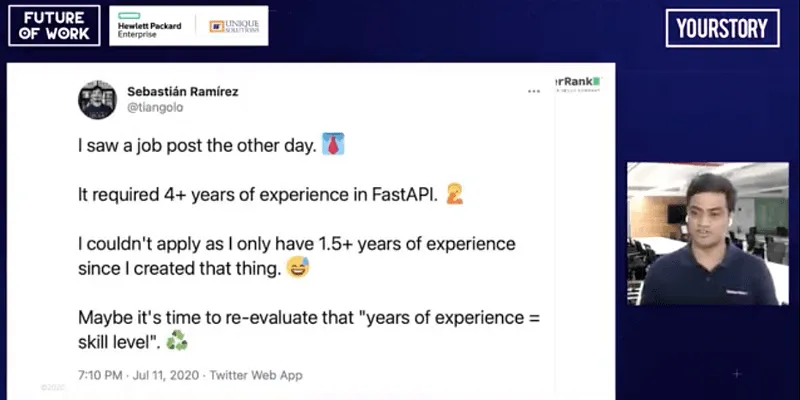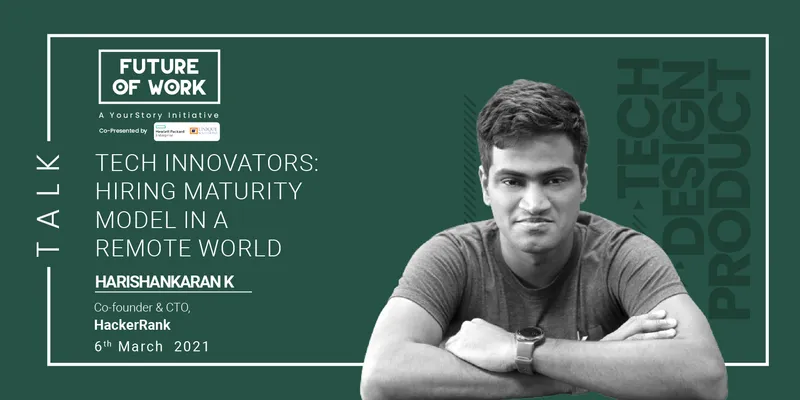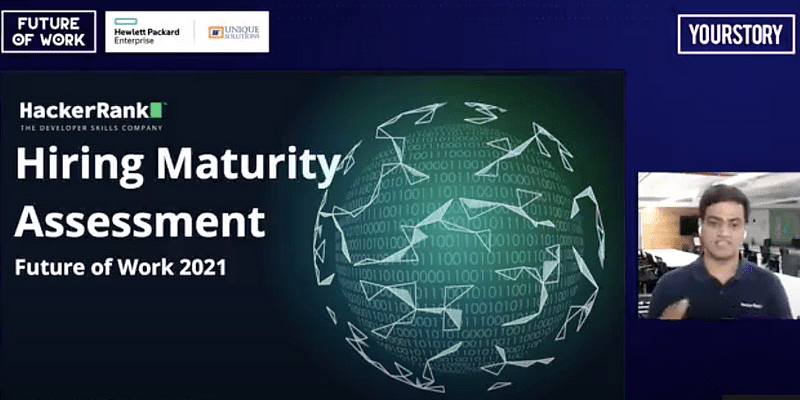The COVID-19 pandemic has changed the way we do everything. From the way we connect in our personal and professional lives to the way we plan our ‘work-life and work-from-home schedules. Therefore, it should come as no surprise that recruiters too are innovating and coming up with new and creative ways to hire and onboard employees. However, what are some of the basic best practices that they should be following, and how can each step of the process be optimised using the right assessment processes.

Harishankaran K, Co-founder & CTO, HackerRank spoke about the importance of companies understanding requirements at YS’s Future of Work 2021.
Offering insight into this and how hiring is different at different stages for companies was Harishankaran K, Co-founder & CTO, HackerRank. He was speaking on Day 2 of YS’s Future of Work 2021. Here are some of the key takeaways from his session on Tech innovators: hiring maturity model in a remote world
Hiring patterns tend to be similar, regardless of the size of the company
Whether a company is a two-member startup or a multinational, the stages of hiring are almost the same. You start with the planning stage where you focus on job descriptions. Then comes the sourcing stage where you collect different profiles. The next is the screening stage where you filter them based on various metrics, and then the interview stage and the final ranking stage. What’s surprising is that these stages are consistent across companies irrespective of size, location, and growth stage. Whether it is one person or a team performing these, companies need to optimise.
Know your requirements
At the planning stage, the requirement needs to be well-defined and accurate. You could create a job description from scratch based on the hiring manager’s input, or by looking at current employees and identifying their skills. However, a thorough understanding of the requirement is essential when posting. Quality is always more important than quantity. A job posting by a company seeking 4+years of experience in FastAPI elicited a response from Sebastian Ramirez, who created the framework only 1.5 years before the post was made.
“This is not an exception. I’ve seen requirements asking for 15 years of experience with Borland when it was created only 11 years ago. Developers tend to stay away from job descriptions that make basic blunders asking for skills that don’t exist,” he said. Also, it’s important to highlight the right benefits. It’s not about ping pong or free food. It’s more about the technologies they are going to work on, it’s more about the challenges and the skill they are going to face.

Hire smart
This is where 90 percent of companies face a challenge, as they are not able to attract the right talent. Very few companies out there have not faced sourcing issues. Companies should examine their assessment processes. Are hiring managers selecting candidates from their personal networks? Or are recruiters hiring from a single point of contact? Hiring should be based on some pre-screen assessments to measure the technical skills, or based on industry-standard skills. Recruiters should also be trained enough to identify these skills. If your sourcing is not done well the funnel dropout rate will be high.
Customise your screening
Different roles have to be treated differently and there is no one size fits all. Companies need to see how their processes are optimised for each role. There are multiple ways companies screen candidates. Today, for a technical role, an online assessment is a given. However, it is possible to turn away smart talent even with a test. Companies still doing assessments through resumes and conversations alone are not hiring optimally. The right way is to match the assessment to the role the recruiter is filling in addition to certain fundamental skills.
Standardise processes
Prior to the pandemic, hiring processes were fairly straightforward and candidates would go through several face-to-face rounds at different levels to familiarise them with the culture of the organisation. But post-COVID with remote work in place, things have changed completely. Remote hiring is now the standard. However, asking a candidate to send code via email doesn’t scale well. A virtual whiteboard, or a lobby ensures that interviewers can have a standard interview process. The other thing to guard against is bias, as it’s not uncommon. A standardised process will result in a standardised outcome
You can download Hacker’s assessment tool here
A big shout out to our Future of Work 2021 Co-presenting Sponsors Hewlett Packard Enterprise and Unique Solutions; Digital Excellence Partner, Google Cloud; Associate Sponsor HP and Intel; and Sponsors: Atlassian, Freight Tiger, Archon I Cohesity, TeamViewer, and Pocket Aces.










